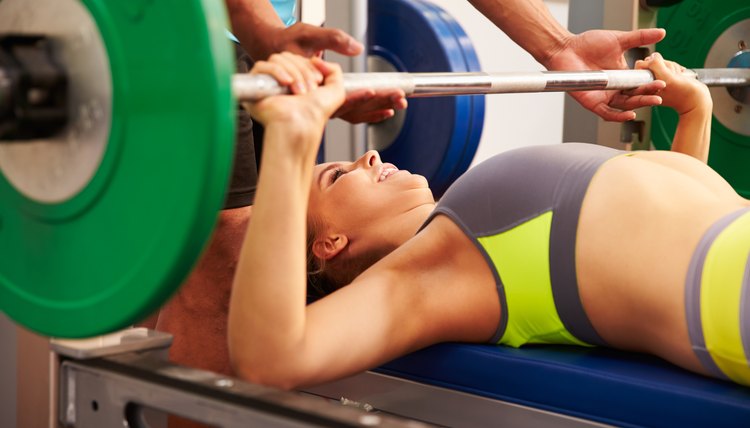What does fact checked mean?
At SportsRec, we strive to deliver objective content that is accurate and up-to-date. Our team periodically reviews articles in order to ensure content quality. The sources cited below consist of evidence from peer-reviewed journals, prominent medical organizations, academic associations, and government data.
The information contained on this site is for informational purposes only, and should not be used as a substitute for the advice of a professional health care provider. Please check with the appropriate physician regarding health questions and concerns. Although we strive to deliver accurate and up-to-date information, no guarantee to that effect is made.
Five-Point Contact When Lifting Weights

Weightlifting can be a dangerous activity. If you do not keep your body in proper form while lifting, you can injure yourself. One method for checking your form is the five-point contact principle set forth by the National Strength and Conditioning Association. Although this principle most easily applies to exercises in the supine, or lying, position, it also covers seated and standing exercises.
Identification
When you are lying on your back to do a bench press or other exercise, check each of the five points to verify it is in contact with the appropriate surface. Start at the top of your body and work your way down. The first three points should be in contact with the bench: the back of your head, your upper back/shoulders and your lower back/buttocks. The last two points, the bottom of each foot, should be in contact with the floor.
Function
The five-point contact principle provides a simple way for you to check your exercise form. If each of these areas is in contact with the bench or floor, this increases your stability and reduces your risk of injury. The five points of contact ensure that the bench supports your spine and lower back, which is especially important if you are lifting heavy weights. Check yourself for the five points of contact before each exercise set. If a spotter is available, have her check the five points of contact during the set.
Lying Exercises
The five-point contact principle applies most easily to supine exercises, when you lie on your back on a bench or the floor. This includes bench presses, flys, incline or decline presses and triceps extensions. Some shorter lifters may not be able to place their feet flat on the floor. In this case, you should place a step at the end of the bench. Choose a step size that allows you to place your feet flat with your knees in line with your hips. If your knees are above your hips, the step is too high.
Seated or Standing
If you are in a seated or standing position, you can still use the five-point contact principle. Imagine you have a board or wall behind you. Your head should be in a neutral position with your chin level to the floor. Stand with your shoulders back, not rounded forward. Maintain a slight pinch in your shoulder blades. Keep your spine in a neutral position and do not arch or round your back. Both feet should be flat on the floor.
References
- "Essentials of Strength Training and Conditioning"; Thomas R. Baechle and Roger W. Earle; 2004
- American Council on Exercise: Dumbbell Bench Press
Writer Bio
Based in Austin, Texas, Jolie Johnson has been in the fitness industry for over 12 years and has been writing fitness-related articles since 2008 for various websites. She received her Bachelor of Arts in English and philosophy from the University of Illinois.
